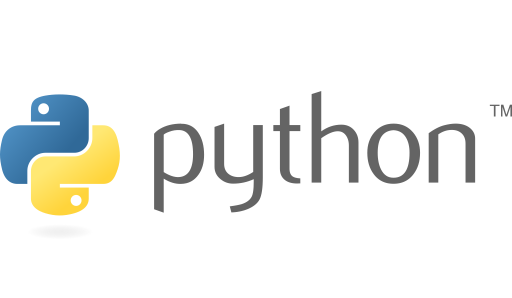介紹
本課程授課教師周百祥教授,教學風格強調動手嘗試程式,鼓勵學生和電腦執行環境互動,直接體會電腦語言的邏輯,而不是用死背的。在課程設計上採取循序漸進的方式,由最基礎的資料類型開始,包括流程、函式、序列等。透過生活化的比喻,來加深學習時的印象,啟發學生動手撰寫程式,進一步引導學生到自我領域相關應用。
教師提供課程製作講義,並放置於課程網站之中。
章節
* 以下章節為預覽,請點報名後點選開始上課,進入課程-
第1週:介紹及環境設置|Introduction and Environment Setup
- ● 課程及Python介紹|Course Overview and Python Introduction
- ● Python示範|Python Demo
- ● 練習1
- ● 開發環境 & 課程主題|Development Environment & Course Topics
- ● 專有名詞介紹|Terminology
- ● 練習2
- ● Cygwin(Windows使用者)|Cygwin (for Windows Users)
- ● IDLE(所有使用者)|IDLE (for All Users)
- ● Jupyter Notebook(所有使用者)|Jupyter Notebook (for All Users)
- ● macOS Terminal(Mac使用者)|macOS Terminal (for Mac Users)
- ● Linux Terminal(Ubuntu使用者)|Linux Terminal (for Ubuntu Users)
- ● 指令介面|Command-Line Interface
- ● 練習3
- ● 文字編輯器|Text Editor
- ● 練習4
- ● 00-jupyter
- ● 01-intro
- ● 02-terminology
- ● 02-CLI
-
第2週:Python概觀|A Quick Tour of Python
- ● 輸入/輸出、註解|Input/Output, Comments
- ● 練習1
- ● 運算元|Operators
- ● 練習2
- ● 整數|Integers
- ● 練習3
- ● 浮點數與複數|Floating Point Numbers and Complex Numbers
- ● 練習4
- ● 字串運算元|String Operators
- ● 練習5
- ● 列表、元組|Lists, Tuples
- ● 字典、集合|Dictionaries, Sets
- ● 練習6
- ● for迴圈|for Loops
- ● 練習7
- ● if判斷式、while迴圈|if Statements, while Loops
- ● 練習8
- ● 函式|Functions
- ● 練習9
- ● 模組|Modules
- ● 練習10
- ● range()函數|range() Function
- ● open()函式|open() Function
- ● 練習11
- ● 物件導向程式|Object-Oriented Programming
- ● 物件導向程式範例|Example of Object-Oriented Programming
- ● 練習12
- ● 語句(陳述)、分隔符|Statements, Delimiters
- ● 練習13
- ● 賦值|Assignments
- ● 練習14
- ● 關鍵詞、標示符|Keywords, Identifiers
- ● 練習15
- ● 程式風格|Coding Style
- ● 練習16
- ● 03-tour
-
第3週:基本資料模式、Python應用程式|Basic Data Types, Python Applications
- ● 字元、ASCII編碼|Characters, ASCII Code
- ● 練習1
- ● ord()和chr()函式|ord() & chr() Functions
- ● 練習2
- ● ASCII控制碼|Control Characters in ASCII
- ● 練習3
- ● 萬國碼|Unicode
- ● 字面值vs.表達式vs.變數|Literals vs. Expressions vs. Variables
- ● 練習4
- ● 數值、數字|Numbers, Numerals
- ● 練習5
- ● 整數字面值|Integer Literals
- ● 練習6
- ● 進制轉換|Integer Literal Conversion
- ● 練習7
- ● 位元運算|Bitwise Operators
- ● 練習8
- ● 負整數表示法|Negative Integer Representation
- ● 位元移位|Bit Shifting
- ● 練習9
- ● 數學函式|Math Functions
- ● 布林值、短路求值(且)|Boolean, Short-Circuit Evaluation (and)
- ● 練習10
- ● 短路求值(或)|Short-Circuit Evaluation (or)
- ● 比較運算符|Comparison Operators
- ● 練習11
- ● Unix指令工具介紹:uniq|Introduction to Unix Utility: uniq
- ● Unix指令工具介紹:cat|Introduction to Unix Utility: cat
- ● Unix指令工具介紹:grep|Introduction to Unix Utility: grep
- ● Python程式執行|Running a Python Script
- ● 指令介面參數|Command-Line Arguments
- ● 04-basic-types
- ● 05-app
-
第4週:Python應用程式(續)、字串|Python Applications (cont
- ● 範例程式|Template Code
- ● 練習1
- ● uniq指令實作|Implementing uniq in Python
- ● cat指令實作|Implementing cat in Python
- ● grep指令實作|Implementing grep in Python
- ● grep指令實作(續)|Implementing grep in Python (cont'd)
- ● 練習2
- ● 跳脫字元|Backslash Escape
- ● 練習3
- ● 字元字面值、單引號vs.雙引號|Char Literals, Single Quotes vs. Double Quotes
- ● 練習4
- ● 原始字串|Raw Strings
- ● 多行字串、三重引號|Multiline Strings, Triple Quotes
- ● 練習5
- ● 字串格式化、%格式化運算元|String Formatting, % Formatting Operators
- ● 練習6
- ● 數值字串格式化|Number Formatting
- ● 練習7
- ● 字元格式化|Character Formatting
- ● 練習8
- ● 字串.format()函式:位置|str.format() Method: by Position
- ● 字串.format()函式:索引|str.format() Method: by Index
- ● 字串.format()函式:關鍵字|str.format() Method: by Keyword
- ● 練習9
- ● 字串.format()函式:數值字串格式化|str.format() Method: Number Formatting
- ● 字串.format()函式:對齊|str.format() Method: Padding with Alignment
- ● 應用範例:乘法表|Example App: Multiplication Table
- ● f字串|f-strings
- ● 練習10
- ● f字串:表達式、數值字串格式化|f-strings: Expression, Number Formatting
- ● 字串.split()函式|str.split() Method
- ● 練習11
- ● wc指令實作|Implementing Unix Utility: wc
- ● 字串.join()函式|str.join() Method
- ● 練習12
- ● string模組|string Module
- ● 練習13
- ● 06-strings
-
第5週:序列、集合、字典|Sequences, Sets, Dictionaries
- ● 序列、索引、截取|Sequences, Indexing, Slicing
- ● 練習1
- ● 截取(續)、轉換成列表或元組|Slicing (cont'd), Conversion to List or Tuple
- ● 序列運算元|Sequence Operators
- ● 練習2
- ● 序列方法|Sequence Methods
- ● 序列方法範例|Example Sequence Methods
- ● 練習3
- ● 序列函式|Sequence Functions
- ● 改變vs.新建並捨棄|Mutate vs. Create & Abandon
- ● 列表構建|List Comprehension
- ● 練習4
- ● 淺複製vs.深複製|Shallow Copy vs. Deep Copy
- ● 練習5
- ● 集合|Sets
- ● 練習6
- ● 集合構建|Set Comprehension
- ● 集合運算元|Set Operators
- ● 集合方法|Set Methods
- ● 集合方法範例|Example Set Methods
- ● 字典|Dictionaries
- ● 練習7
- ● 字典存取及複製|Accessing, Modifying, and Copying Dictionaries
- ● 練習8
- ● 字典鍵的限制、排序、字典套用於字串格式化|Restrictions on Keys, Sorting, String Formatting with Dictionaries
- ● 07-seq
- ● 08-sets
- ● 09-dict
-
第6週:控制流程|Control Constructs
- ● if-else陳述式|if-else Statements
- ● 練習1
- ● 範例:翻譯(版本1)|Example: Translation (First Version)
- ● 練習2
- ● 範例:翻譯(版本2,解法A)|Example: Translation (Second Version, Solution A)
- ● 範例:翻譯(版本2,解法B)|Example: Translation (Second Version, Solution B)
- ● 轉換成函式|Conversion to Function
- ● 條件表達式|Conditional Expressions
- ● 範例:閏年|Example: Leap Year
- ● if-elif-else陳述式|if-elif-else Statements
- ● 練習3
- ● 化簡回傳布林值的if-else|Eliminating if-else When Returning Boolean
- ● 練習4
- ● while迴圈|while Loops
- ● 範例1:實作product()函式|Example 1: Implementing product() function
- ● 無限迴圈+break陳述式|Infinite Loop + break Statement
- ● 範例2:實作index()函式|Example 2: Implementing index() function
- ● while-else陳述式|while-else Statements
- ● 用return離開while迴圈|Exit while Loop Using return
- ● 範例3:重複查詢字典|Example 3: Repeated Dictionary Lookup
- ● 範例4:stack指令轉譯器|Example 4: Stack-Command Interpreter
- ● continue陳述式|continue Statements
- ● for迴圈、在for迴圈拆解元組|for Loops, for Loops with Unpacking Tuples
- ● 練習5
- ● 在for迴圈用enumerate()函式|for Loops with enumerate() function
- ● 練習6
- ● 10-conditional
- ● 11-loops
-
第7週:例外、檔案|Exceptions, Files
- ● 例外介紹|Introduction to Exceptions
- ● 常見例外|Common Exceptions
- ● 練習1
- ● try-except陳述式、例外的控制流程|try-except Statements, Control Flow of Exceptions
- ● 處理多個例外、例外參數|Handling Multiple Exceptions, Exception Arguments
- ● 練習2
- ● 巢狀try-except陳述式|Nested try-except Statements
- ● try-except-finally|try-except-finally
- ● 練習3
- ● 例外類別階層|Exception Class Hierarchy
- ● 發起例外|Raising Exceptions
- ● 練習4
- ● 斷言|Assertions
- ● 檔案I/O介紹|Introduction to File I/O
- ● 開啟檔案、檔案路徑|Opening Files, File Path
- ● 練習5
- ● 讀取檔案|Reading Files
- ● 練習6
- ● 寫入檔案|Writing Files
- ● with-as陳述式、seek()和tell()方法|with-as Statements, seek() and tell() Methods
- ● 練習7
- ● 標準輸入輸出|Standard I/O
- ● 練習8
- ● I/O重新導向、管道|I/O Redirection、Pipe
- ● 標準錯誤輸出|Standard Error Output
- ● uniq指令實作(改進)|Implementing uniq in Python (Revisit)
- ● 文字檔vs.二進制檔案 |Text Files vs. Binary Files
- ● 位元組|bytes
- ● 練習9
- ● os模組|os Module
- ● 12-exceptions
- ● 13-files
-
第8週:函式|Functions
- ● 函式用語|Terminology of Functions
- ● 練習1
- ● 回傳值、函式物件vs.函式呼叫|Return Value, Function Object vs. Function Call
- ● 練習2
- ● 傳遞參數|Passing Parameters
- ● 練習3
- ● 有預設值的選填參數|Optional Parameters with Default Values
- ● 練習4
- ● 可變長度參數|Variable-Length Arguments
- ● 可變關鍵字參數|Variable-Keyword Arguments
- ● 拆解參數|Unpacking Parameters
- ● 練習5
- ● 拆解字典當參數|Unpacking Dictionary as Named Parameters
- ● 練習6
- ● 代號表介紹|Introduction to Symbol Table
- ● 可視範圍、dir()函式|Scope, dir() Function
- ● 刪除代號|Deleting a Symbol
- ● 代號表的運作|Implementation of Symbol Tables
- ● 標示符連結規則|Rules for Identifier Binding
- ● 練習7
- ● 範例:totalWithTax函式(global關鍵字)|Example: totalWithTax Function (global Keyword)
- ● 練習8
- ● 改進totalWithTax函式(自動化測試)|Improve totalWithTax Function (Automated Testing)
- ● 練習9
- ● 示範totalWithTax函式|Demo totalWithTax Function
- ● 14-function-1
- ● 15-function-2
-
第9週:函式(續)、遞迴|Functions (cont
- ● 外掛函式介紹|Introduction to Plug-in Functions
- ● 練習1
- ● Lambda表達式|Lambda Expressions
- ● 練習2
- ● 範例:用字典順序排序|Example: Sorting in """"""""""""""""True Dictionary Order""""""""""""""""
- ● 練習3
- ● 範例:排序星期字串|Example: Sorting Day-of-Week Strings
- ● 練習4
- ● map()函式|map() Function
- ● 用到Lambda的map()函式|map() with Lambda
- ● 練習5
- ● 用到多個序列的map()函式、zip()函式|map() with Multiple Sequences, zip() Function
- ● 練習6
- ● filter()函式|filter() Function
- ● 練習7
- ● 函式表|Function Table
- ● 內部函式|Inner Functions
- ● 文件字串|DocString
- ● 練習8
- ● Python風格指南|Python Style Guide
- ● 練習9
- ● 遞迴介紹|Introduction to Recursion
- ● 範例:階乘|Example: Factorial
- ● 練習10
- ● 追溯遞迴函式的執行堆疊|Tracing the Execution Stack of Recursive Function
- ● 範例:費氏數列|Example: Fibonacci
- ● 練習11
- ● 範例:計算列表元素數量|Example: Counting Elements in a List
- ● 練習12
- ● 範例:計算列表元素數量(另解)|Example: Counting Elements in a List (Alternatives)
- ● 範例:計算檔案數量|Example: Counting Files
- ● 練習13
- ● 範例:遞迴查找|Example: Recursive Finding
- ● 範例:縮排|Example: indentation
- ● 練習14
- ● 範例:大綱編號(構想)|Example: Outline Numbering (Approach)
- ● 範例:大綱編號(程式碼)|Example: Outline Numbering (Source Code)
- ● 練習15
- ● 16-functions-3
- ● 17-recursion
-
第10週:物件導向程式|Object-Oriented Programming
- ● 物件介紹|Introduction to Objects
- ● 練習1
- ● 複製物件|Copying an Object
- ● 練習2
- ● 實例化物件|Instantiating an Object
- ● 練習3
- ● 程序導向vs.物件導向程式設計|Procedure-Oriented vs. Object-Oriented Programming
- ● 練習4
- ● 範例:turtle繪圖|Example: turtle Graphics
- ● 示範turtle繪圖|turtle Graphics Demo
- ● 範例:二維Point類別、建構子|Example: 2D Point Class, Constructors
- ● 屬性|Attributes
- ● __repr__方法|__repr__ Method
- ● 練習5
- ● 函式vs.方法|Function vs. Method
- ● Point類別的方法|Methods for Point Class
- ● @property裝飾器|@property Decorator
- ● 練習6
- ● 類別跟實例的命名空間|Name Spaces of Class and Instance
- ● 類屬性|Class Attributes
- ● 練習7
- ● 範例:DateTime類別|Example: DateTime Class
- ● 練習8
- ● Setter方法實作|Implementation of the Setter Methods
- ● 透過__dict__方法存取屬性|Attribute Access Through __dict__ Method
- ● 把Getter/Setter包裝成屬性存取|Package Getter/Setter as Attribute Access
- ● 類方法|Class Methods
- ● 靜態方法|Static Methods
- ● 18-oop1
-
第11週:物件導向(續)|Object-Oriented Programming (cont
- ● 繼承介紹|Introduction to Inheritance
- ● isinstance()和issubclass()函式|isinstance() and issubclass() Functions
- ● 練習1
- ● 繼承|Subclassing
- ● 練習2
- ● 範例:MyList類別|Example: MyList Class
- ● MyList類別的find()方法|find() Method for MyList Class
- ● MyList類別的sort()方法|sort() Method for MyList Class
- ● 深入看sort()方法|Potential Issue with sort() Method
- ● MyList.__repr__()方法的代號表|Symbol Table for MyList.__repr__() Method
- ● MyList.sort()方法的代號表|Symbol Table for MyList.sort() Method
- ● MyList.find()方法的代號表|Symbol Table for MyList.find() Method
- ● 範例:ColorPoint類別|Example: ColorPoint Class
- ● 多型介紹|Introduction to Polymorphism
- ● 練習3
- ● 「運算符」形式的語法vs.「方法」形式的語法|Operator vs. Method Syntax
- ● 練習4
- ● 範例:Vector類別|Example: Vector Class
- ● 練習5
- ● Vector類別中的「過載」|Overloading in Vector Class
- ● 「可過載」運算符:原地賦值|Overloadable Operators: Augmenting Assignments
- ● 練習6
- ● 其他「可過載」運算符|Other Overloadable Operators
- ● __getitem__和__setitem__方法的用法|Usage of getitem and setitem Methods
- ● 練習7
- ● 實作__getitem__和__setitem__方法|Implementing __getitem__ and __setitem__ Methods
- ● 運算符過載的一些註記|Notes about Operator Overloading
- ● 練習8
- ● 19-oop2
常見問題
線上成績單 :此課程不提供線上成績單,僅供成績顯示
學習履歷 :
此課程不提供學習履歷
(取得線上修課證明):參與線上考試,超過60分以上者可申請修課證明。(此證明無法抵免學分)
(取得AI學習履歷):觀看影片與作答練習題,可於指定時間內申請AI學習歷程(至多可申請兩次)。
(取得成績單): 參與基本科目免修測試,通過者可獲得成績單與免修/抵免資格。
關於課程認抵、報名資格、考試資訊等問題,詳下:
(1) 準大一生課程認抵資訊,請見招聯會全國大學先修課程暨認證資訊平台,網址:https://cis.ncu.edu.tw/ApcourseSys/
(2) 本校基本科目免修測試:限符合本校基本科目免修測試報考資格之準大一生,預計8月開放報名,詳情請見網址:http://curricul.site.nthu.edu.tw/p/404-1208-179164.php?Lang=zh-tw
講師

周百祥
國立清華大學資訊工程學系 教授
| 查看講師評價 (3)
0.0
平均評價

匿名熊貓
2021-05-14 19:31:03很棒

符傳祥
2021-07-15 22:43:18老師好帥 愛了

匿名熊貓
2021-09-05 13:26:37雖然尚未學過PYTHON,但是我卻能在此課程中學到一些知識。
預覽影片 & 簡介
2021-先修課程-Python語言程式入門 (5-8月)
本課程適合準大一新生選讀 強調動手嘗試程式,鼓勵學生和電腦執行互動,直接體會電腦語言的邏輯,而不是死背。設計上採循序漸進的方式,由最基礎的資料類型開始,包括流程、函式、序列等,啟發動手寫程式。


